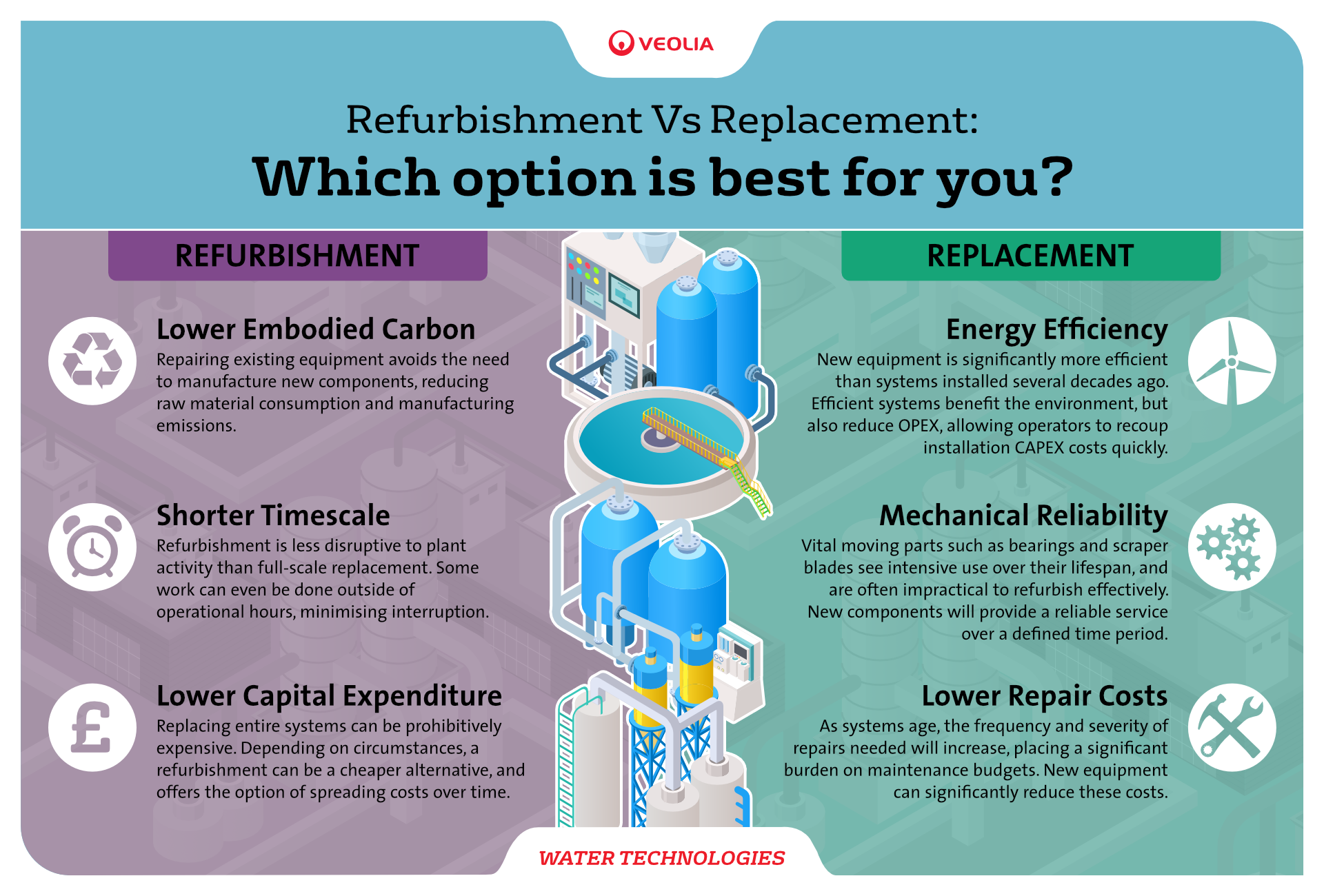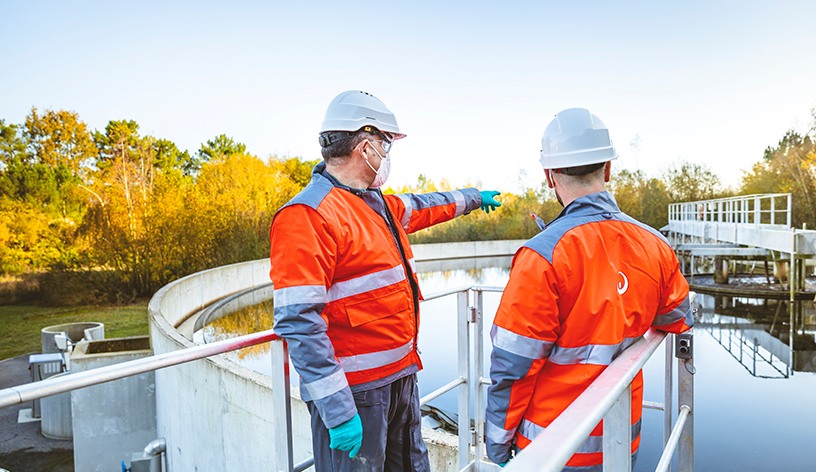If your water treatment system is presenting regular performance and efficiency issues it could be reaching the end of its lifespan. Frustrating periods of downtime could suggest that your system is rapidly declining. If so, you might be facing a dilemma: refurbishment or replacement.
Is it Better to Refurbish or Replace a Water Treatment System?

It depends on each site's existing technology and water treatment requirements, but many often think that a completely new system is the only way forward. However, you may be surprised to learn that in some cases, refurbishing a water treatment system can often work better for you – as well as being more likely to suit your current budget. Here are a few reasons why a refurbishment may be the best move:
Uninterrupted business-as-usual
Refurbishments reduce the amount of downtime needed for essential works compared to installing an entirely new system and can be carried out within a very tight time frame. What’s more, refurbishments can take place out-of-hours and if you really can’t afford any interruption to business it’s possible to arrange temporary mobile water services to fill the gap while your primary system is being upgraded.
Protect the bottom line
Think about both the immediate and long-term costs when making your decision. Refurbishments can be far more cost-effective than splashing out on an entirely new plant – if this suits your needs. A refurbishment helps to reduce operating and maintenance costs and it’s a great way of extending the life of your system. This allows you to continue with business as usual for several more years, knowing that your water treatment system is performing effectively and you are unlikely to encounter any expensive technical issues.
Improve environmental performance
Choosing to refurbish your water treatment system delivers significant environmental benefits while maintaining operational efficiency. By repairing and upgrading existing equipment, you reduce the embodied carbon footprint associated with manufacturing new components and minimise raw material consumption. Modern refurbishment can incorporate components that optimise both power and chemical consumption. This environmentally conscious strategy supports sustainable practices by extending equipment lifecycle and reducing waste, making refurbishment an environmentally responsible choice for water treatment facilities.
A Real-World Example

We successfully upgraded an existing Biostyr™ water treatment plant for a major UK water company, demonstrating how refurbishment can be a more sustainable alternative to new installations. The original plant, installed in 2002, needed to meet stricter ammonia consent levels (from 6mg/l to 3mg/l) by March 2025. Rather than completely replacing the system with a new Moving Bed Biofilm Reactor (MBBR), we assessed that the existing tanks and equipment were still in excellent condition and recommended upgrading to Biostyr Duo.
The refurbishment involved adding K5 media to the existing Biostyr tanks, combining MBBR technology with the original system, and installing retention sieves. This approach significantly reduced capital costs by eliminating the need for new civil works, decommissioning, and removal of the old system. The refurbishment was conducted cell by cell over a year, with minimal complications and successful performance results. The project showcases how strategic refurbishment can achieve environmental targets while offering a cost-effective path to compliance with reduced carbon impact compared to complete replacement. Read the full case study now.
Don’t just scrap, get in touch
There is a lot to consider when planning a water treatment system refurbishment. However, it doesn’t have to be a stressful process. So before you commit to scrapping your current water treatment system and replacing it completely, we are happy to have a chat with you about your current situation. Please click here.